Happy New Year! If you’ve been meaning to watch the Batman streams that Chris and I have been doing, then tonight is your last chance. We’re going to finish the game tonight on his Twitch channel. That show begins at 8pm Eastern.
Here is the VOD from last week:
Chris has been in the driver’s seat the whole time, and here are his thoughts on the combat:
I’ve discussed the Arkham animations and combo system several times during the streams, but I thought it would prove useful to more clearly express my thoughts on the matter in writing. What I’ve found to be a struggle in all of the games, not just Origins, is the inconsistency in Batman’s own attack animations and how that impacts the state of “flow”. When Batman is flying from one goon to the other with well-timed critical strikes, it is the easiest way to maintain your attack combo since Batman’s speed and movement is determined by that rhythmic timing. In other words, no matter how far or close an enemy is, Batman will always strike in time with the pre-established rhythm. This is when combat feels the most “in the zone” and empowering, but it would also be too easy if all it took was to punch thugs at a steady, consistent tempo. It would be like a rhythm game that relies only on the same quarter-note being played at a single 4/4 tempo beat. This is why different types of enemies are thrown in that are impervious to basic punches, and further why Batman has instant knockouts at his disposal. You want to build up that combo meter in order to take out the tricky thugs with a greater defense more swiftly, simultaneously doing your best to avoid losing that combo meter by either getting hit or too carelessly throwing a punch at the wrong guy.
However, both counter-attacks and instant knockouts differ from the consistency of critical strikes in that they possess a variety of unique, situational animations. It’s actually incredible the amount of animations covering nearly any combat scenario, allowing Batman to seamlessly turn or shift against an opponent’s attack, and for that opponent to respond. However, the length of these animations is inconsistent, and unless you’re somehow able to observe and discern each unique animation, it is unlikely you’ll be able to tell when one is about to end. This is especially true for the nature of the combat system, where the player’s eyes are most likely looking at the rest of the thugs looking out for attack alerts or plotting their next move. It is often in this stage that I will lose a combo simply because I was expecting an animation to take longer, only to find I happened to execute one of the shorter knockouts or counters.
Arkham Origins complicates this further with unpredictable mook etiquette and the 50/50 chance that Batman will outpace a thug’s basic attack. If you watch the streams, you’ll notice there are moments enemies are surrounding Batman within melee range yet fail to strike. I am expecting an attack, but none come. Other times, foes will be a great distance away and still lunge forward. You’ll also see Batman will sock a mook in the jaw or deliver a boot to the face despite the counter icon being above their heads, while other times Batman will get struck back first.
Those animation inconsistencies across all Arkham games are a minor issue, but the unpredictable nature of Origins and its mooks leaves me feeling as if the game really isn’t under my control. It coincidentally helps Batman feel less experienced, but that sort of thematic connection between player and protagonist should not be due to the mechanics failing to present a consistent set of rules for the player to understand.
Internet News is All Wrong
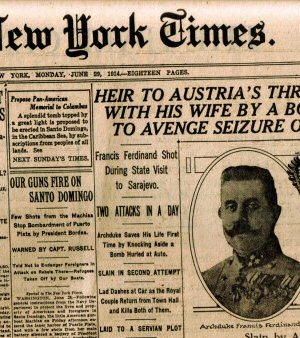
Why is internet news so bad, why do people prefer celebrity fluff, and how could it be made better?
Wolfenstein II
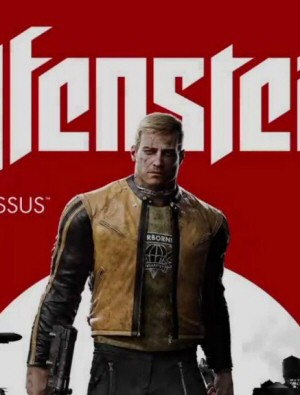
This is a massive step down in story, gameplay, and art design when compared to the 2014 soft reboot. Yet critics rated this one much higher. What's going on here?
The Best of 2016
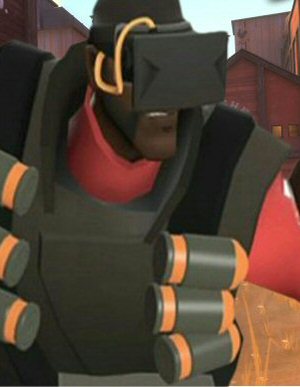
My picks for what was important, awesome, or worth talking about in 2016.
The Best of 2013
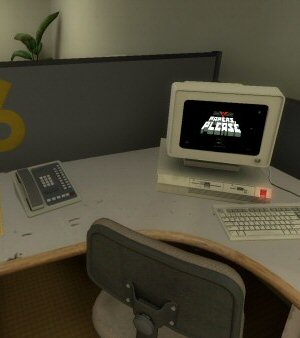
My picks for what was important, awesome, or worth talking about in 2013.
Why Batman Can't Kill
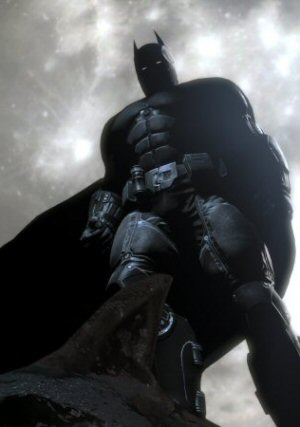
His problem isn't that he's dumb, the problem is that he bends the world he inhabits.
 T w e n t y S i d e d
T w e n t y S i d e d

Happy New Year, everybody! I wish you all cheap graphics chips, and ever-full health bars, both in and out of game!
As for the episode itself, here’s what I found interesting when I watched it last week:
1:08:40 – Yes, extremely weird leveling decision to lock the 5x knockout upgrade behind the armour upgrades.
Also, MAN is this game overstuffed! They couldn’t overstuff it more if they tried! And as nonsensical as the train station inside of the Bridge was, I really liked Firefly as a boss and as a character. He seems much more coherent and well developed than the rest of the Assassins in this game (barring Bane, of course). And I like that this fight uses gadgets that you haven’t used in a boss fight up to this point (and they’re also ones you wouldn’t normally use in combat).
And as much as I’ve been dumping on the game, I gotta admit, Gotham looks really nice in a snowstorm… And I really like how Batman’s suit gets more and more beat up as the night progresses. Early on in the game I was barely noticing the little holes in his cape while he was gliding. In this part, however – especially towards the end – you can very clearly see how beat up his armour is, and how his entire cape is riddled with tears. It really gives you a sense of just how much this night has taken out of him, and that effect couldn’t really have been done if the game took place over a longer period of time. So as much as I agree with Shamus and Chris that they should have set it over a longer period of time, all of it taking place in a single day definitely has some advantages…
I don’t understand what you mean by either “developed” or “coherent”. As far as Arkham Origins is concerned, Firefly has exactly one trait: he likes fire. That’s it. That’s both his backstory and his personality. There’s nothing developed about that. Nor is there anything coherent about it. To be coherent–or incoherent, for that matter–Firefly would need to have at least two traits.
Please note that I’m not saying he’s a bad character. (He’s an extremely annoying boss fight, but he’s not a bad character.) His only purpose in the game is to be there for Batman to fight. He’s not important to the story and so he doesn’t need a complicated history or a rich, complex personality. What we got is just about exactly what we needed.
I mean that while he may have exactly one character trait (or two, if you count the fact that he’s absolutely insane :D), everything about his design, dialogue and move set embodies that one character trait. And while that may be shallow in a character sense, it’s absolutely enough for the purpose of being someone for Batman to fight.
Sure, he’s one-note, but actually I like token, one-note characters in these sorts of games. And I feel like he’s a good token character in a game where some of the token characters aren’t particularly well done.
Maybe “developed” and “coherent” weren’t the best words for it, but I think it kinda gets the point across…
> he’s not a bad character
Isn’t he? He really grated me with his shitty fire puns, and was just drawing my attention to the game’s weak writing. A proper utilitarian character wouldn’t do that. If you have to make your character that shitty because you have no time to flesh him out, just cut him.
I remember the mechanics of that particular boss fight much more vividly than I remember anything the boss may have said. Stupid puns are stupid but also harmless and extremely on-brand for the fire-obsessed psycho.
Let’s talk about this a little.
To me, this is the tension between “what makes a good story?” and “what makes a good game?”
If this were a novel, I’d definitely agree it should space out over a few days (heck, even 8 days for 8 assassins…). That would make more sense than Batman stopping Penguin 10 minutes before he foils firefly and oh crap it’s time to fight Bane 15 minutes later…
But in a novel, the writer is in charge of what’s happening in the longer stretches of downtime when the action sequences aren’t rolling. Is he sleeping? Doing research? Monitoring communications? The author is also in charge of exactly when he decides to call it a night and go home.
In a game, both of those are problematic. If I’m doing side quests, I don’t want a nanny system telling me it’s time to go to sleep. Even worse, I don’t want content walled off because “we’re saving those Riddler puzzles for tomorrow.” Or, worse, you can’t do those side quests anymore because they were from yesterday (the “Wrex’s Family Armor” problem from Mass Effect). Either you force the player to hit a “no more content today” wall, or you have to justify why the main plot stops turning but you can do puzzles to your heart’s content.
Also, if I have downtime, it would be annoying (and counter to Batman) to spend 16 hours sleeping. What else am I doing? Running chemical samples? Getting better weapons? Communicating with Gordon? Shouldn’t I get to decide? Hey, I’m the player here. Why can’t I use that time to train, or improve a skill tree? Sure, Batman spending a few hours training karate and having a measurable skill boost makes no sense. But neither does the rest of the leveling system….
IMO taking this out of “all in one night” would kill the he momentum of the game and introduce a bunch of story/agency problems.
It wouldn’t work like that. You already have Batman go to places by his choice in cutscenes and you already have missions that only appear after a certain point, and it would be just the same.
No-one is suggesting making a cutscene of 16 hours of downtime, or having quests on the map but telling you you can’t do them. And I’m not suggesting having a mechanic where you decided your sleep like Fallout.
All it is, is a cutscene happens, and when it ends it’s a new day. And the game is better for it because things on the map have changed, as a player you can discover what’s happened and engage with those changes as much as you like. It’s a convenient narrative point to change the composition of enemies on the map and introduce new challenges.
If anything the time progression works better as a game than it does as a story, because games have so many more interesting ways to change an environment. Even something as simple as a change of lighting feels impactful.
The ‘when does Batman sleep?’ is a narrative problem, but it’s exactly the same problem in stories as in a game. Typical ways to solve it is to have Batman get knocked out, or collapse and have him wake up a day later (‘Your body was exhausted Master Wayne’), or to have an event which will take place on a future day and just skip to that event. (‘The Penguin will be here tomorrow.’ Caption box: the next day)
Both those things have been done in similar games, and they work fine.
It’s true. I remember that very well. But Chris, that also happens in Asylum. I’m not sure if it happens quite as often, but I’ve been playing Asylum this week and, believe me, it definitely happens. I think it’s a question of timing and possibly combo meter. The counter icon shows up before the mook’s attack animation starts. If Batman’s attack lands before the mook’s animation really gets going then Batman hits the mook rather than vice versa.
To be perfectly honest, I can’t spot any meaningful differences between the combat in Origins and the combat in Asylum. I guess Batman’s got a slide tackle in one and not in the other and I suppose that some of the gadgets might be a little different–I almost never use those, so I couldn’t say–but it seems to me that the recipe in Origins is the same as the recipe in Asylum: three parts punch, one part counter, with cape swirls and enemy-vaults added to taste. If there’s a difference in the enemy AI, I’m afraid I can’t see it.
“If there’s a difference in the enemy AI, I’m afraid I can’t see it.”
For what it’s worth, I’ve spent a lot of time with these games and I can really tell the difference. In Arkham City, I’ve gotten gold medals on all of the challenge rooms. I’ve actually scored DOUBLE what it takes to score gold. To pull this off, you need to fight a few dozen dangerous enemies and put them all down without ever getting hit yourself. You need to take everyone down in a single long combo that also works in most of your gadgets and special moves. I don’t claim to be the best player out there, but I think I’ve at least earned the right to talk about these mechanics with some authority.
And the combat in Origins is a mess.
Despite being able to keep a combo alive for minutes at a time in City, when I get to Arkham Origins suddenly my combo is being broken constantly because guys are sliding in and punching me in the back while I’m in the middle of another attack. Even after my third trip through the game, I still can’t tell what the game wants from me or what I’m supposedly doing wrong.
I can’t say for sure what’s changed. We can haggle over timing windows, mook etiquette, animation length, or AI behaviors, but it’s tough to point at a single thing as the source of the problem. I can just point to a half dozen different symptoms and say that the other games are perfectible and Origins seems to be ruled by chaos.
Combat in Origins is definitely different, and harder. My feeling was that the mooks attack a tad faster, before the “gonna attack” icon is very large. It’s just enough to screw up your Arkham City trained reflexes.
I don’t doubt you, Shamus. You and I are at opposite ends of the skill spectrum. You have hard-won expertise and you’ve internalized the controls, timing, etc. of the various non-Origins games. It’s natural that you’d get tripped up by small differences. I, on the other hand, am a filthy, button-mashing scrub. I struggle to reach a combo counter of 5 and count myself extraordinarily lucky if I hit double digits. The small differences are lost on me and all I can see are the similarities.
The funny thing is that I think I was actually slightly better at Origins than I am at Asylum. I played Shadow of Mordor, which has very similar combat, shortly before I played Origins, but it’s been years since I played anything similar. Whatever Arkham muscle memory I had is long gone.
You’re completely correct that it happens in Asylum and City as well, but just as with the animation-timing of a special knockdown or a counter, the problem is exacerbated in Origins for some reason. I haven’t played the games as often as Shamus, but I played Asylum again in June of 2020 and then returned to City around last April or May, and that’s when I began to notice some of my issues with the Arkham combat compared to other action games. However, here in Origins, it feels, as Shamus notes, a lot more chaotic and inconsistent.
And in a game with combat as tight as this and reliant upon combo multipliers, the last thing you want to be is inconsistent. Now, if you’re not really trying to max out that combo multiplier or are just going with the flow or otherwise not thinking too hard about them each, maybe they’ll all feel the same. It’s not an incredibly dissimilar system, after all, and is clearly built off the same underlying tech. But there’s something about Origins that, as Shamus might put it, feels imperfectible, since any attempt to try and figure it out and respond in kind is immediately contradicted by the game itself.
I am not trying to max out the combo meter. I am not nearly skilled enough to have any hope of maxing out the combo meter. I mostly just want to survive fights with my health reasonably intact.
I had a different problem with Arkham’s combat – I never got the hang of the way Batman’s moves escalated as his combo meter goes up. At the beginning of the fight, tapping attack+right will make him throw a simple punch, targeted at the closest guy on the right. Fine.
But about 10 punches in, the same buttons (attack+right) no longer executes ‘punch’ – instead the Dark Knight dives into some elaborate somersault/flying kick that sends him across the room and takes a lot longer to finish.
9/10 times, my combos ended because I’d see someone winding up to hit me and tap attack+right, intending to quickly smack them in the face and interrupt their attack before going back to what I was doing – but old Bats would launch into the Dynamic Flying Whirlygig Heelstrike, usually past my intended target, and get hit halfway through while in midair.
I haven’t played any of these games in a while, but I can’t say I ever experienced that issue. 95% of the times I lose a combo is because I screw up and press the wrong direction or button like a putz, and the other 5% is because I fail to avoid an attack. At least in the first two games. In Origins that ratio probably slides more into the 50/50. I’m not sure about Knight because there isn’t nearly any combat in it.
In any case, this series has made me want to start playing the games again, so I guess I’ll notice if it happens this time. Installing Asylum right now.
But what it lacks in combat, it more than makes up for in Batmobile sections!
“We laughes, we cries…. we hateses it, precious!! ”
– Gollum’s review of Arkham Knight.
(Maybe also my review…)
It didn’t happen as often in Asylum or City, though it certainly happens. It might also depend on the player. After all, I have no idea what it looked like when you played those games, but I know I had a tendency to try and wait for the animation to be finished before targeting the next mook. If you’re mashing the attack button while an animation is still playing, then it may not register as a failure.
Of course, my point is not that this issue only happens in Origins, but that it feels exacerbated in Origins.
Re “breaking the combo meter”, one thing that really helps is dive-jumps (or whatever they’re called, the move where you double-press A).
The dive jump is virtually always safe. Enemies can’t punch you during a dive jump, except a few with unblockable moves. Making a dive jump over an enemy is always safe, even when the enemy is attacking you, even if the move is unblockable. Dive jumps reset both the “combo timer” (the time you have to punch an enemy before your combo meter resets) and the “gun timer” (the time before enemies with machine guns shoot you in brawls).
A single dive jump never breaks your combo meter, but two dive jumps in a row do, except when you’re jumping over an enemy, in which case you can chain as many jumps as you want, and the combo meter stays up. Because dive jumping is Always Safe and interrupts enemy attacks, that means you can trivially jump back and forth over the same enemy for hours and never break your combo.
(I think I figured most of that out doing the final Joker challenge in Arkham City; man was that challenge rough)
Hope this helps!
Bit of a nitpick: the point where the game tells you “I need to use the glue grenade to make a raft” is actually the first point in the game where you do need it. In the segment at the beginning of the livestream, you could go over the water by gliding / using the grapple. The glue raft was only necessary to get the enigma bonus.
Hey, I might have missed if someone else mentioned this before, but I notice you guys talking a lot about the time period the game takes place in (smart phones but old-timey tv screens but briefcase laptops but cage elevators but…). It just seems really nitpicky for a game that has so much else to nitpick, and all the Arkham games do it. Back in Asylum, you had a mental asylum which wasn’t shut down by Reagan and nurses that dressed in that WWII era white dress, but also force-field gates and flat screen monitors. And Batman: The Animated Series, upon which these games are very much based, also has that anachronistic setting: blimps are all over, most of the cars look like they’re from the 1940s, but women are on the police force and Batman has his rocket plane.